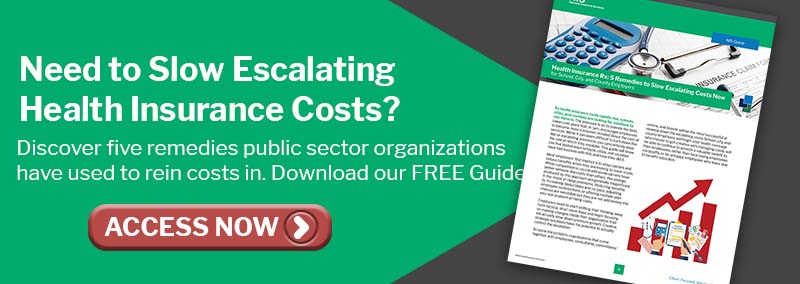With health insurance increases, schools, counties, and other governmental employers are continually looking for ways to contain their costs. Traditionally, public sector employers took a tactical approach: reviewing and planning each renewal annually. This method is no longer feasible. Proactive planning out 3-5 years is quickly becoming the norm.
Why? Health insurance is increasingly complicated. It’s not as straightforward as it used to be. Bidding the competition every year is simply not going to provide organizations with the savings and rate stability they need to create plan sustainability. Strategic planning creates a blueprint or action plan that helps organizations move towards a larger goal, all the while making conservative, small changes over time.
This gives everyone time to get used to a new way of thinking about healthcare, allows the culture to change organically, and helps everyone gain a new perspective on lowering costs. This will also give bargaining units time to negotiate and compromise.
When formulating your benefits strategy, consider:
- Cost Drivers Have you reviewed your plan utilization reports lately? What employee behaviors/plan utilizations are driving up your cost? Once you know how your plan is running, you can work to mitigate these cost drivers through plan design and employee education. Are there some plan design changes to consider?
- Organizational Goals What are the long-term goals, short-term objectives, and main priorities of your benefit plan? How can changes in your benefit plan help you reach your organizational priorities?
- Employee Communication Plan Do you have a communication campaign planned? What behavioral changes have you seen in your employees due to your educational strategy? Is the communication helping to build consensus around the goals, objectives, and priorities?
- Give Employees Options Having several choices for medical coverage gives each person the ability to customize their plan based on their personal needs and allows the employer to determine contribution levels based on those choices. Some ideas include:
- Spousal coverage options i.e. surcharges or carve outs
- High/low medical plan choice (base plan/buy up plan)
- HRA for retirees
- HRA option with “regular” medical plan
- HSA option with HDHP
- Self-funding While not without risks, self-funded health insurance plans can give organizations better cash flow, tax benefits, a greater degree of flexibility, reduced administration costs, and long-term control of healthcare costs. In a self-funding environment, the benefits of wellness incentives and plans can be fully realized because of the control you have over the plan design. An overall improvement in employee health can lead to an immediate reduction in claims, which feeds back into the organization’s reserve fund. If those trends continue, there may be a reduction in the contributions made by both employers and participants.
- Health Plan Add-Ons. Health plan “add-ons” are additional services you can offer your employees that drastically improve retention AND lower medical claims spending all at the same time.
Reducing claims and plan utilization is the only way to keep premiums steady. Public employers can continue to bid their plan year over year, cross their fingers, and hope they don’t have a major catastrophic health claim; or, they can set 3-5 year goals and start taking steps to reduce utilization over time. The best way to accomplish this is through the strategic planning process. The best time to begin is now!

